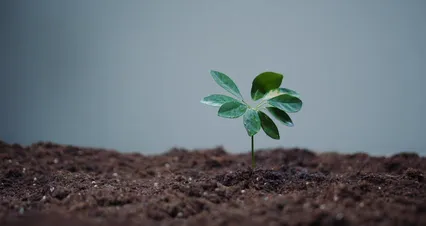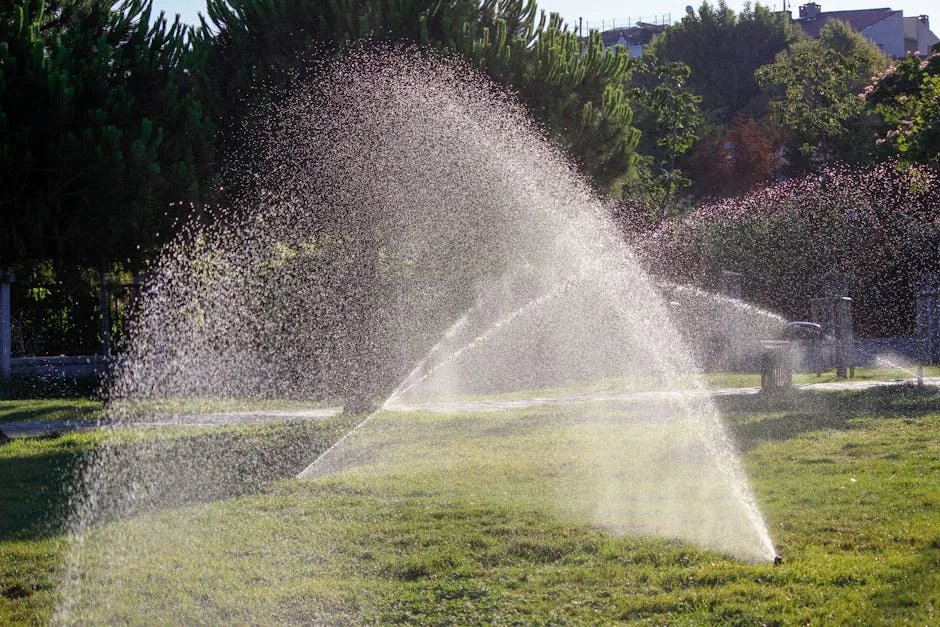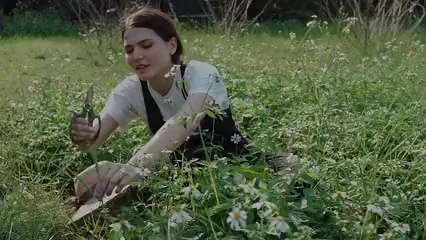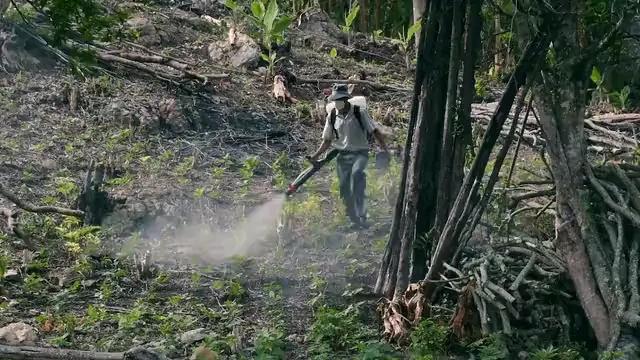

Comprehensive Guide to Grass Plants: Types, Care, and Benefits
Introduction
Grass plants play a vital role in gardens and landscapes. They offer beauty, versatility, and ecological benefits. From creating lush lawns to enhancing garden aesthetics, grasses are essential. This guide will cover various grass types, care tips, and benefits, helping you make the most of these incredible plants.
Summary and Overview
Grass plants are diverse, consisting of many varieties that thrive in different conditions. They typically feature long, narrow leaves and can be categorized into ornamental, turf, and native grasses. Ornamental grasses add charm to landscapes, while turf grasses create lush lawns for activities. Native grasses support local biodiversity and ecosystems.
Using grass plants in landscaping has numerous advantages. They improve air quality, provide erosion control, and attract wildlife. Additionally, many grass types are low-maintenance, making them ideal for homeowners. In this post, we will explore the definition of grass plants, their benefits, and how to care for them effectively. Get ready to learn about the fascinating world of grasses!
Speaking of grass types, if you’re looking to kickstart your gardening journey, consider grabbing some Blue Fescue Grass Seeds. They’re like the cool kids of the grass world, bringing that chic blue hue to your garden while being easy to care for!
Types of Grass Plants
Ornamental Grasses
Ornamental grasses are popular for their stunning visual appeal and texture in gardens. These unique plants come in various heights, colors, and forms, making them ideal for creating interest throughout the year. They often sway gently in the breeze, adding movement to your landscape.
Common characteristics of ornamental grasses include narrow leaves and feathery flower plumes. They thrive in full sun or partial shade, depending on the variety. Popular options like Blue Fescue add a cool blue hue, while Fountain Grass brings soft, flowing textures. If you’re feeling adventurous, why not try Fountain Grass Seeds to add that gentle flow to your garden!
In garden design, ornamental grasses can serve multiple purposes. They work well as focal points, borders, or even ground cover. Their versatility and low maintenance make them a fantastic choice for any landscape. By incorporating these grass varieties, you can create a visually appealing oasis in your outdoor space.

Turf Grasses
Turf grasses are essential for creating beautiful lawns and safe sports fields. They provide a resilient surface perfect for outdoor activities. Common types include Kentucky Bluegrass and Bermuda Grass. Kentucky Bluegrass thrives in cooler climates, while Bermuda Grass excels in warmer regions.
Maintaining healthy turf is crucial. Regular mowing helps keep grass at the ideal height, promoting growth and resilience. Watering deeply but infrequently encourages deep root systems. Fertilization should align with seasonal needs, ensuring your lawn gets necessary nutrients. For a boost, consider using Organic Lawn Fertilizer to keep your turf healthy and green!
Environmental considerations are also important. Choosing drought-resistant grasses can reduce water usage. Additionally, using organic fertilizers supports soil health and minimizes chemical runoff. By selecting the right turf grasses and employing smart maintenance practices, you can create a lush, green area that benefits both your home and the environment.

Native Grasses
Native grasses play a vital role in local ecosystems. They are well-adapted to regional conditions, making them easier to grow and maintain. Planting native grasses supports wildlife habitats, providing food and shelter for various species.
Benefits of these grasses include improved soil health and reduced erosion. They require less water and fertilizer than non-native varieties, making them eco-friendly choices. Examples of native species include Big Bluestem and Switchgrass, both known for their hardiness and beauty. If you’re interested, you can find Switchgrass Seeds to enhance your biodiversity!
By incorporating native grasses into your landscape, you contribute to biodiversity. These plants attract pollinators and help sustain local wildlife. Choosing native grasses not only enhances your garden but also supports the environment, fostering healthier ecosystems.

Creating a backyard wildlife habitat can greatly benefit local ecosystems. Learn how to attract nature to your garden.
Growing Conditions for Grass Plants
Soil Requirements
The ideal soil conditions for grass plants vary by type. Generally, well-drained soil is crucial for healthy growth. Most grass species prefer a pH between 6.0 and 7.0. Testing your soil can help identify its pH level and nutrient content. To do this effectively, consider using a Soil pH Test Kit to get accurate readings!
Different grass plants thrive in various soil types. For instance, sandy soils drain quickly, while clay soils retain moisture. Amending soil with organic matter can improve drainage and nutrient levels.
Good drainage is essential to prevent root rot. If your area has heavy rainfall, consider raising garden beds or incorporating drainage solutions. Lastly, grass plants require adequate nutrients. A balanced fertilizer can promote robust growth and vibrant color, ensuring your lawn or garden looks its best.

Light and Water Needs
Grass plants thrive best when they receive the right amount of light and water. Understanding these needs is crucial for a healthy lawn or garden.
Most grasses prefer full sun, needing at least six hours of sunlight daily. However, some varieties can tolerate shade. If you have shaded areas, consider shade-tolerant grasses like fine fescue. Choosing the right type for your space can enhance growth and appearance.
Watering is equally important. A deep watering schedule is ideal. Aim for about one inch of water per week, either from rainfall or irrigation. Watering early in the morning helps prevent evaporation and fungal diseases.
Both over-watering and under-watering can cause problems. Over-watering can lead to root rot, while under-watering may cause grass to wilt and turn brown. Watch for signs like yellowing or drooping blades, which indicate your grass needs attention. Proper light and water management will keep your grass lush and vibrant.

Care and Maintenance of Grass Plants
Pruning and Cutting Back
Pruning grass plants is essential for maintaining their health and appearance. Regular cutting back encourages new growth and helps prevent overcrowding.
Timing is crucial. For ornamental grasses, late winter or early spring is the best time to prune. This allows the plants to retain their winter interest while preparing for fresh growth. When cutting back, aim to trim the grass to about six inches above the ground. This ensures enough foliage remains for photosynthesis.
Using the right tools is also important. Sharp shears or Garden Shears make clean cuts, reducing the risk of damage. Always wear gloves to protect your hands from sharp blades.
Pruning offers several benefits. It promotes airflow, reducing disease risk. Additionally, it can enhance the plant’s overall shape and size. By incorporating regular pruning into your grass care routine, you ensure healthy, thriving plants.

Pest and Disease Management
Grass plants can face challenges from pests and diseases. Identifying these issues early is key to effective management.
Common pests include armyworms and aphids. Armyworms can quickly damage grass by feeding on the leaves, while aphids suck sap, weakening the plant. Monitoring your grass regularly can help catch these pests before they spread.
Control methods vary. Organic options include introducing beneficial insects like ladybugs or using Insecticidal Soap. Chemical treatments are also available, but it’s essential to follow instructions carefully.
Preventative measures are important too. Healthy grass plants are less susceptible to infestations. Ensure proper watering and fertilization to keep your grass robust. Additionally, maintaining good lawn hygiene, like removing dead debris, can deter pests. By staying proactive, you can keep your grass plants healthy and thriving.

Benefits of Grass Plants
Environmental Benefits
Grass plants are crucial for a healthy environment. They improve air quality by absorbing carbon dioxide and releasing oxygen. This process helps combat air pollution in our neighborhoods. Additionally, grass acts as a natural filter, trapping dust and pollutants. By doing this, grasses contribute to clearer skies and fresher air.
Another significant benefit is erosion control. Grass roots stabilize soil and prevent it from washing away during heavy rains. This is particularly vital in areas prone to flooding. Furthermore, grass plants support biodiversity. They provide habitats for insects, birds, and other wildlife. By planting diverse grass species, you can create a thriving ecosystem. Overall, incorporating grass plants promotes environmental sustainability and enhances ecosystem services.

Aesthetic and Functional Uses
Grass plants add unique beauty to any landscape. Their varied textures and colors can transform a dull garden into a lively space. Picture soft, waving grasses contrasting against vibrant flowers. This visual interest can elevate your garden design.
Functionally, grasses serve as noise barriers. They reduce sound pollution from nearby roads or neighbors. Installing dense grass borders can create a serene retreat in your yard. Moreover, these plants offer privacy screening, allowing you to enjoy your outdoor space undisturbed.
Grass plants also attract wildlife, providing food and shelter for birds and beneficial insects. Seasonal changes in grasses add charm throughout the year. Imagine golden hues in autumn or frosty blades in winter. By incorporating grasses into your landscape, you enhance both its beauty and functionality.
Conclusion
Grass plants offer numerous benefits for both gardening and environmental health. They enhance air quality, prevent erosion, and support biodiversity. Additionally, they bring aesthetic appeal and practical uses to landscapes. Consider incorporating grass plants into your garden to enjoy these advantages. Whether you aim for visual interest or a healthier environment, grasses are a perfect choice for your outdoor spaces.
FAQs
What are the best types of grass plants for my region?
Choosing the right grass plants starts with understanding your region’s climate. Consider factors like temperature, rainfall, and sun exposure. For warmer areas, Bermuda Grass thrives, while Kentucky Bluegrass is better for cooler regions. Soil type is also important. Sandy soils drain quickly, while clay retains moisture. Ensure the grass type matches your soil for optimal growth. Research local recommendations to find varieties that suit your specific area. Local gardening centers can be a great resource for this information.
How often should I water my grass plants?
Watering needs vary by grass type and climate. Generally, grass plants require about one inch of water weekly. This can come from rainfall or irrigation. Adjust your schedule based on weather conditions. During hot, dry spells, you may need to water more frequently. Early morning is the best time for watering to reduce evaporation. Be cautious of over-watering, which can lead to root rot. Watch your grass for signs of wilting or browning, indicating it might need more moisture.
Can grass plants be grown in containers?
Yes, grass plants can thrive in containers! Choose varieties that adapt well to pot life, such as Blue Fescue or Fiber Optic Grass. Ensure your container has drainage holes to prevent waterlogging. Use a high-quality potting mix to provide necessary nutrients. Containers also allow you to move plants to optimal light conditions. Just remember to monitor their water needs closely, as container plants can dry out faster than those in the ground.
What should I do if my grass plants are wilting?
If your grass plants are wilting, start by checking their watering schedule. Under-watering is a common cause, so ensure they receive adequate moisture. Conversely, over-watering can also lead to wilting due to root rot. Inspect for pests or diseases that might be affecting plant health. Look for signs like yellowing leaves or unusual spots. If you spot any issues, treat them promptly using appropriate methods. Adjust your care routine based on your findings to help your grass recover.
Are ornamental grasses invasive?
Some ornamental grasses can indeed be invasive. For example, varieties like Miscanthus and Pennisetum may spread rapidly and outcompete native plants. Always research specific types before planting. To prevent invasiveness, consider planting non-invasive alternatives or controlling their spread with regular maintenance. Check local regulations regarding invasive species to ensure your garden stays healthy and balanced. This way, you can enjoy the beauty of ornamental grasses without harming the ecosystem.
Please let us know what you think about our content by leaving a comment down below!
Thank you for reading till here 🙂 And hey, if you’re planning on a garden makeover, don’t forget to check out some Garden Gloves to keep your hands clean while you dig into your gardening adventure!
All images from Pexels



